Key takeaways
- A musician portfolio showcases an artist’s identity and emotional connection through song selection, especially in cover performances.
- Cover songs allow for personal interpretation, introduce classic music to new audiences, and contribute to skill development.
- Effective arrangements involve breaking down song structures, adding unique interpretations, and recording rough drafts to capture essence.
- Promotion through social media, collaborations, and live performances enhances visibility and fosters audience connection.
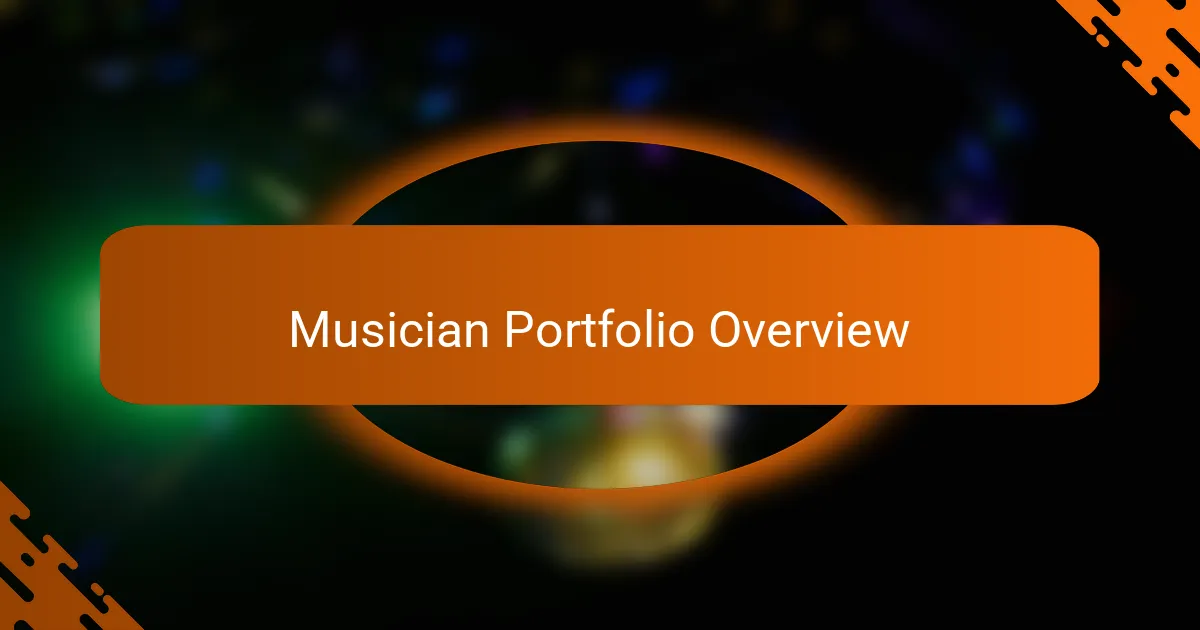
Musician Portfolio Overview
Creating a musician portfolio is like painting a canvas of your musical journey. It showcases not just your talent but your unique identity as an artist. I remember when I first put mine together; it felt like opening a window into my soul.
Each piece in my portfolio tells a story. I often ask myself, “How can I convey my passion through these covers?” By selecting songs that resonate with my experiences, I connect with the audience on a deeper level. It’s about more than just the notes; it’s about the emotions behind them.
Your portfolio should evoke feelings and provoke thoughts, inviting listeners to explore your artistry. When I included covers of Queen’s hits, it wasn’t just about the music; it was about sharing the joy and empowerment I felt from those songs. How does your music reflect who you are?
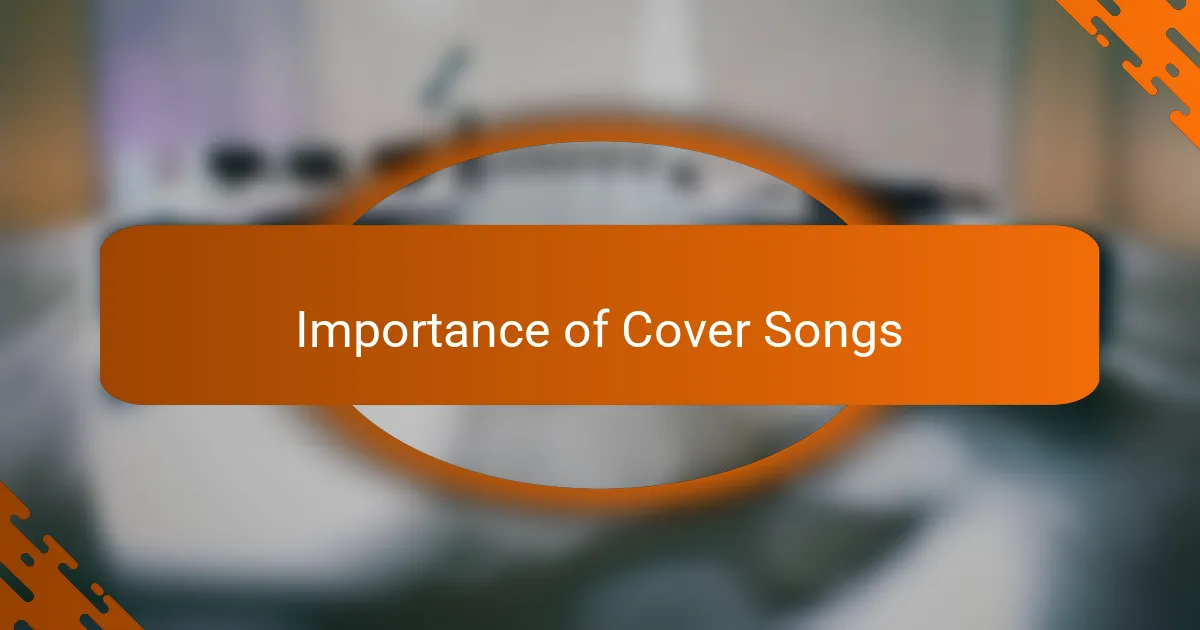
Importance of Cover Songs
Cover songs hold a special place in the music world. They allow artists to pay homage to their influences while showcasing their unique interpretations. Personally, creating covers of Queen’s hits helped me explore different styles and vocal techniques, making me appreciate the original songs even more.
Moreover, cover songs can introduce classic tracks to new generations. I remember when I covered “Bohemian Rhapsody”—seeing young listeners discover its brilliance was incredibly rewarding. It’s about creating connections and evoking emotions through timeless music.
Here’s a quick comparison of the impact of original songs versus cover songs:
| Aspect | Original Songs | Cover Songs |
|---|---|---|
| Creativity | Showcases unique artistry and innovation | Highlights personal interpretation of existing works |
| Audience Reach | Targets original fanbase | Introduces songs to new audiences |
| Skill Development | Requires innovation and composition skills | Aids in vocal and performance versatility |
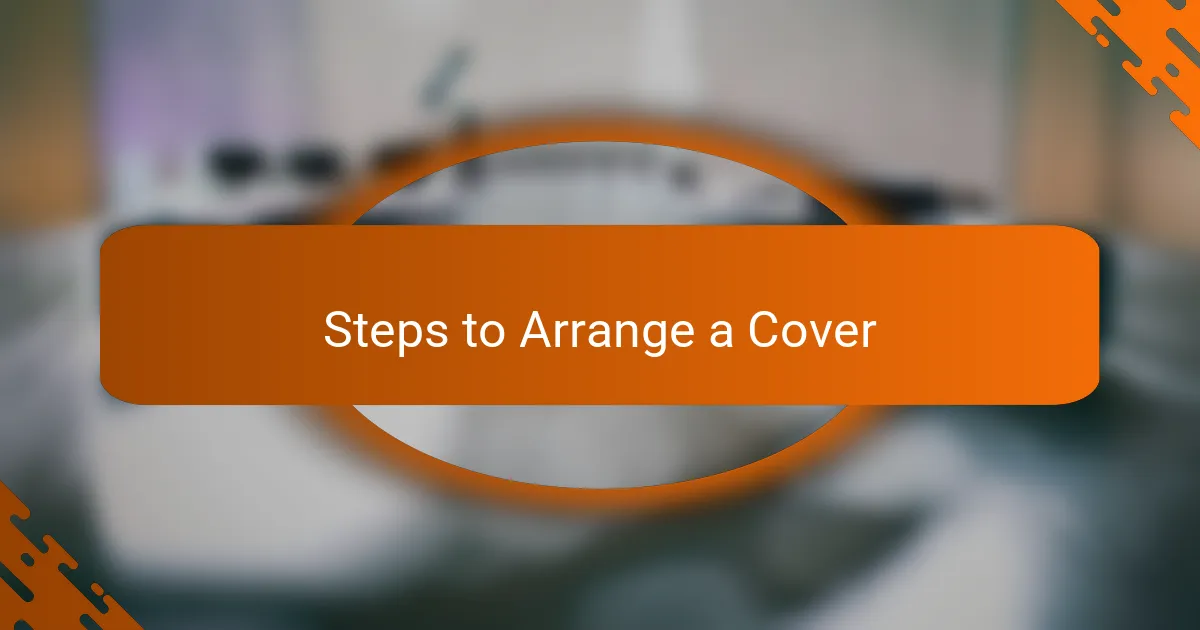
Steps to Arrange a Cover
When arranging a cover of a Queen hit, I start by breaking down the song’s structure. Understanding the sections—like verses, choruses, and bridges—helps me create a solid foundation. I often listen to the original multiple times, not just for melody but also for the emotional nuances that Freddie Mercury brought to his performances.
Next, I focus on my unique interpretation. I think about the mood I want to convey, and sometimes I even experiment with different tempos or keys to add my flavor. For example, when I arranged “Somebody to Love,” I slowed it down in my version, giving it a more soulful vibe that resonated with my audience.
Finally, I record a rough draft to see how everything blends together. This stage is crucial for capturing the essence of the song while allowing my voice to shine through. It’s both exhilarating and nerve-wracking, but it ultimately shapes the final product into something I can be proud of.
| Step | Description |
|---|---|
| Break Down Structure | Analyze sections of the song for a strong foundation. |
| Add Unique Interpretation | Experiment with tempo and mood to express your style. |
| Record Rough Draft | Capture initial ideas to refine and shape the final cover. |
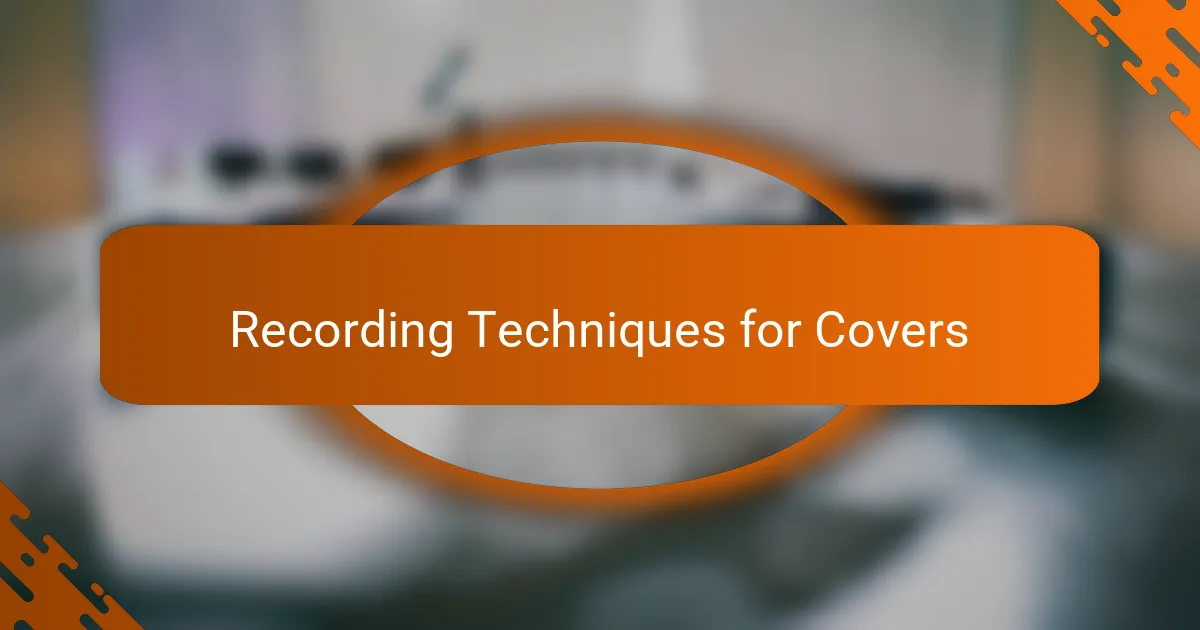
Recording Techniques for Covers
When I approach recording covers, I find that the technique can be just as important as the performance itself. For instance, I often use a mix of live tracking and digital production. This allows me to capture the raw energy of my voice but still take advantage of editing tools for that polished finish. I vividly remember the thrill of recording “Somebody to Love” where the layering of harmonies made the emotional impact really stand out.
One technique I swear by is experimenting with microphone placement. Moving my mic just a few inches can change the whole vibe of the recording. I learned this during a session for “Bohemian Rhapsody,” where the nuances in vocal dynamics truly came alive with the right setup.
Here’s a simple comparison of recording techniques I find effective:
| Technique | Description |
|---|---|
| Live Tracking | Recording instruments and vocals simultaneously to capture genuine energy. |
| Digital Overdubs | Layering additional tracks to enrich the sound, often used for harmonies or solos. |
| Mic Placement | Adjusting the distance and angle of the microphone to enhance vocal tone and clarity. |
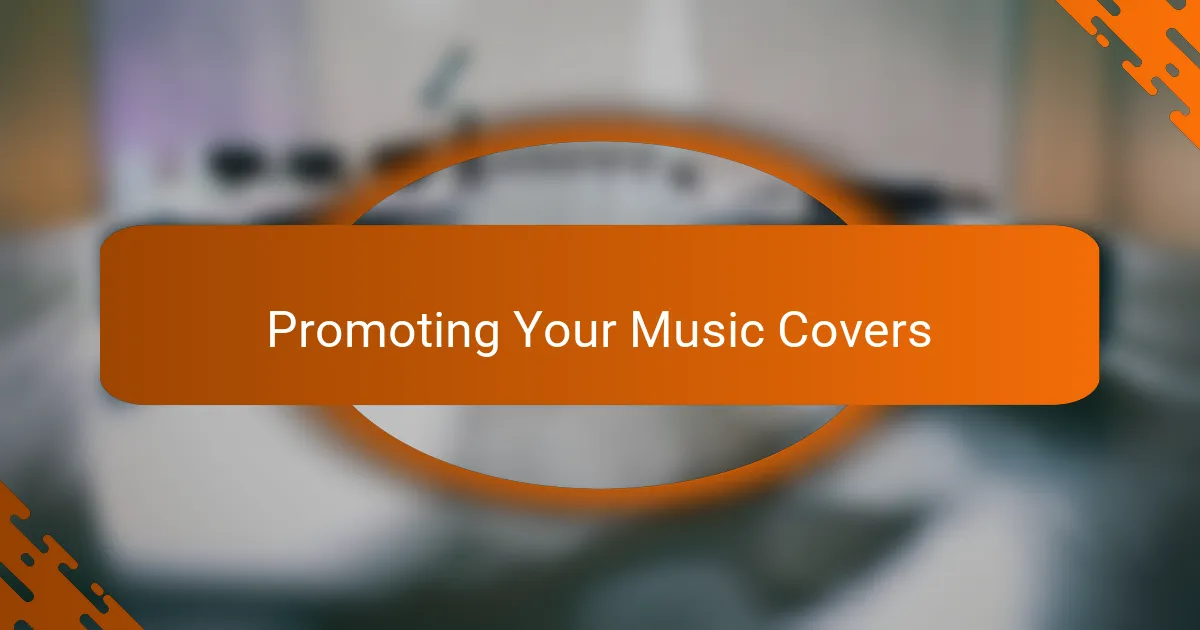
Promoting Your Music Covers
When it comes to promoting your music covers, social media is your best friend. I’ve found platforms like Instagram and TikTok invaluable for sharing short snippets of my covers. It creates anticipation and draws in listeners who might then search for the full version. Have you ever felt that rush when someone shares your music? It’s a thrill that fuels your passion even more.
I also think about collaborations as a powerful promotional tool. Partnering with other musicians can expose your work to their audience, creating a win-win scenario. I once collaborated with a fellow artist on a cover of “We Will Rock You,” and their fanbase embraced my style, which was incredibly gratifying. It’s proof that tapping into others’ networks can be a game changer for visibility.
Lastly, consider live performances as an effective way to promote your covers. Whether it’s an open mic night or a livestream, getting on stage allows you to connect with your audience authentically. I still recall the adrenaline from performing “Killer Queen” live and watching the crowd respond. There’s something magical about that energy, isn’t there? Your music becomes a shared experience, solidifying your place in their memories.
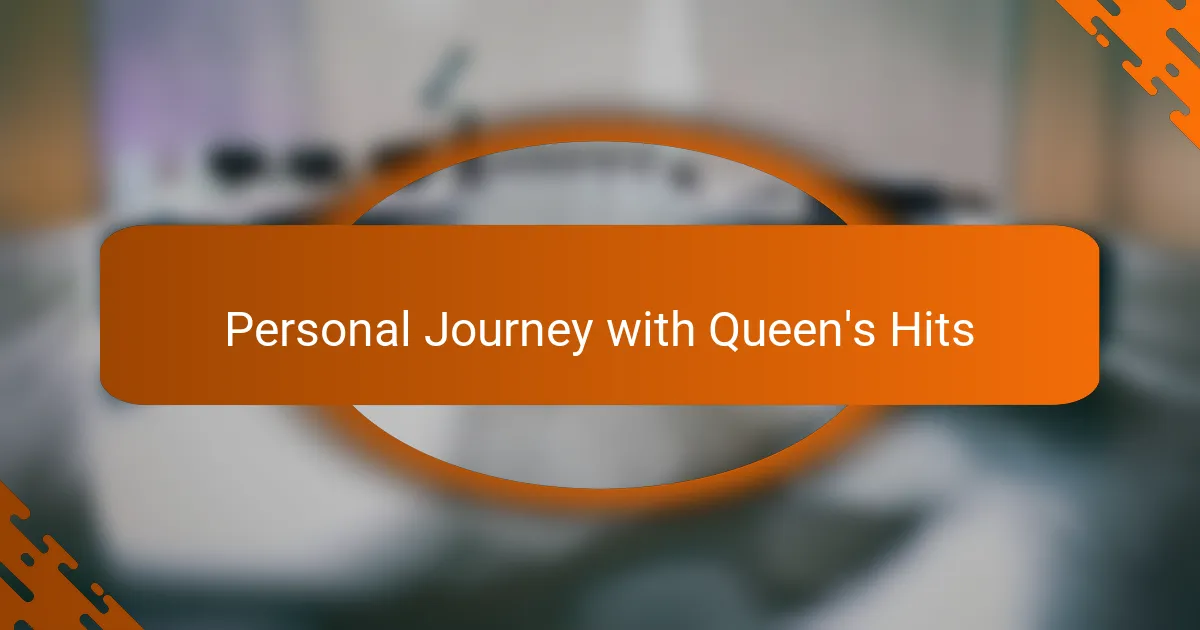
Personal Journey with Queen’s Hits
My journey with Queen’s hits has been nothing short of transformative. From the moment I first listened to “Don’t Stop Me Now,” I felt invigorated. It’s as if their music taps into a universal joy that can uplift any listener. The challenge of capturing that essence in my covers ignited a fire in me, pushing me to dive deep into what the songs truly represent.
I distinctly remember the day I decided to cover “Crazy Little Thing Called Love.” It was a sunny afternoon, and as I strummed my guitar, the playful beat filled the room with warmth. Mixing my style with the upbeat vibe of the song felt liberating. Have you ever found yourself lost in a song, feeling like it was written just for you? That’s exactly what I aimed to convey in my version, hoping listeners would feel that same lightness and joy.
Creating covers of Queen’s music has taught me the importance of vulnerability. Each piece I chose speaks to a moment in my life, a story waiting to be shared. For instance, my rendition of “You’re My Best Friend” was inspired by my own friendships, and bringing that personal touch made the performance resonate even deeper. It’s a beautiful reminder that music, at its core, is about connection.